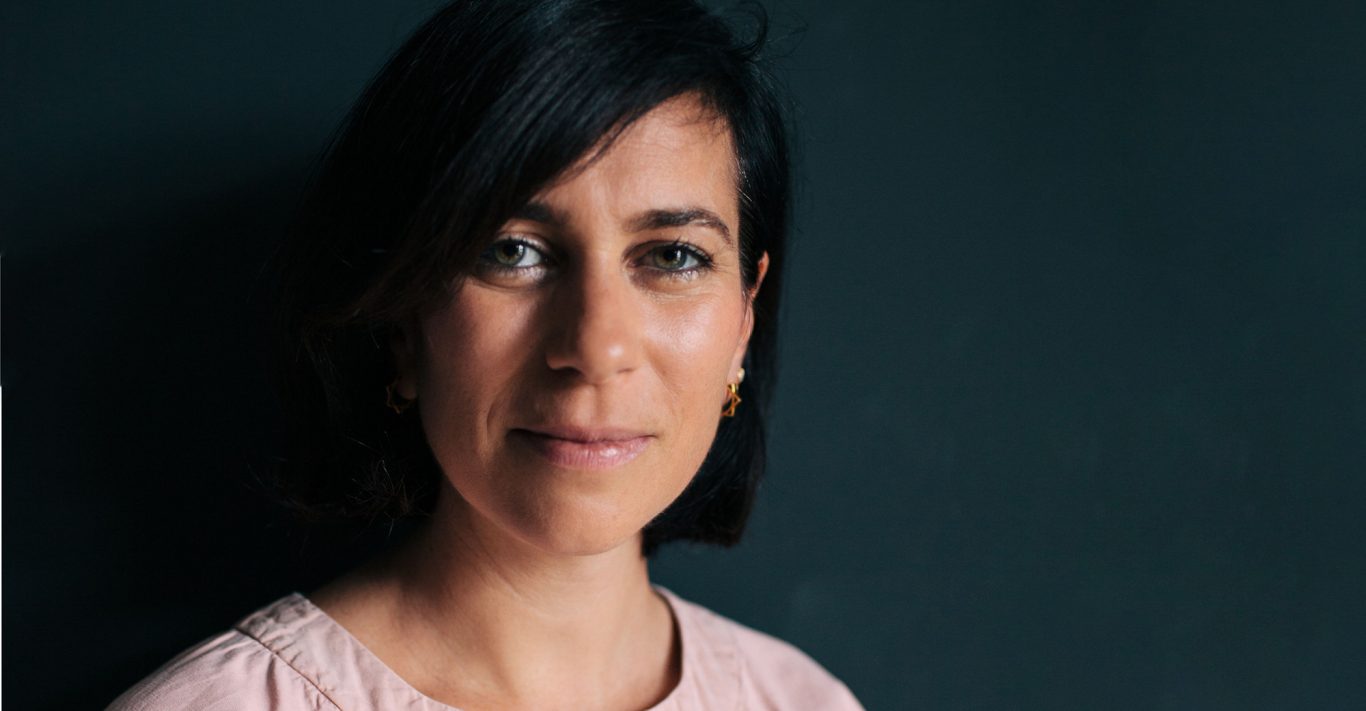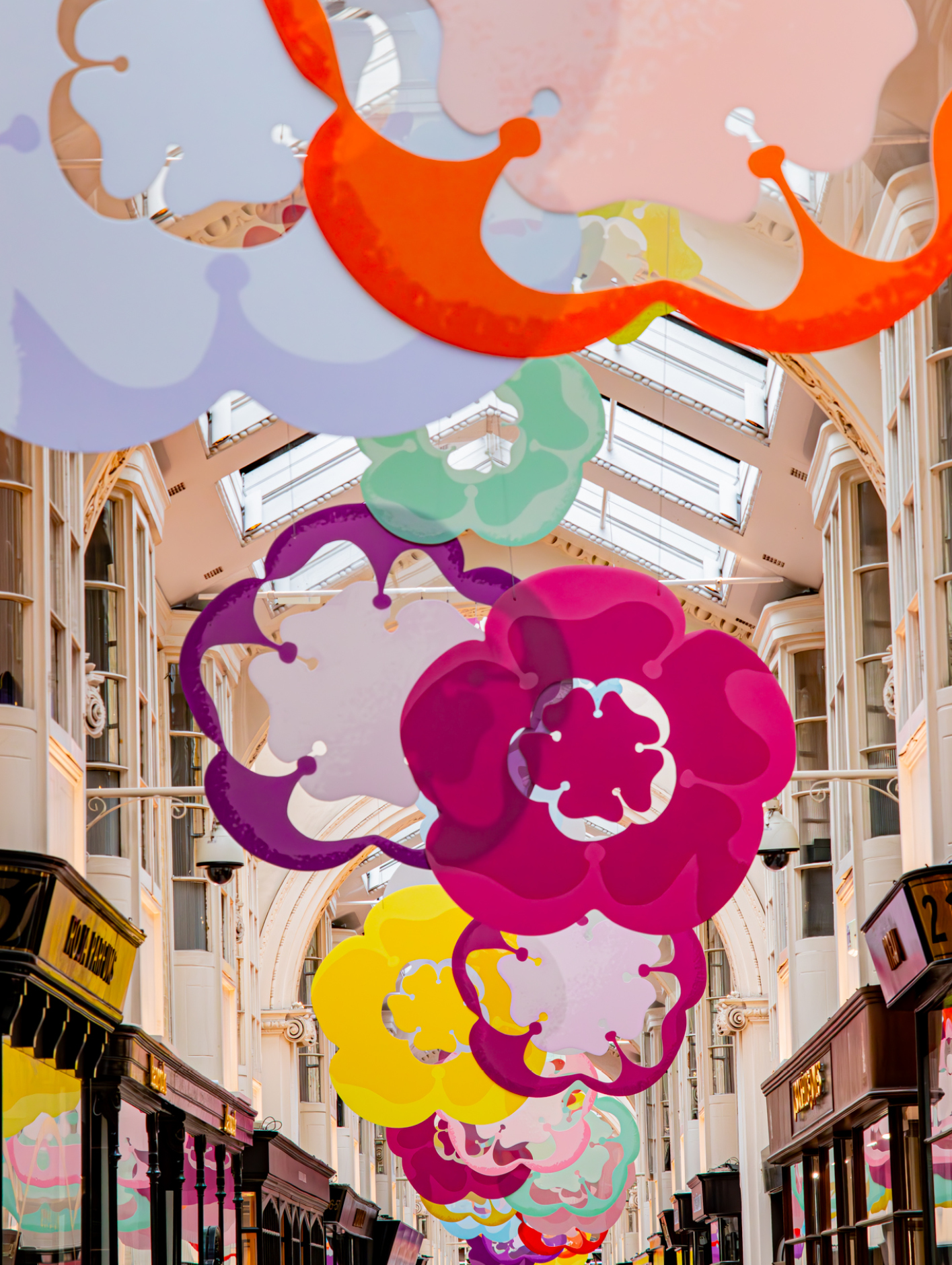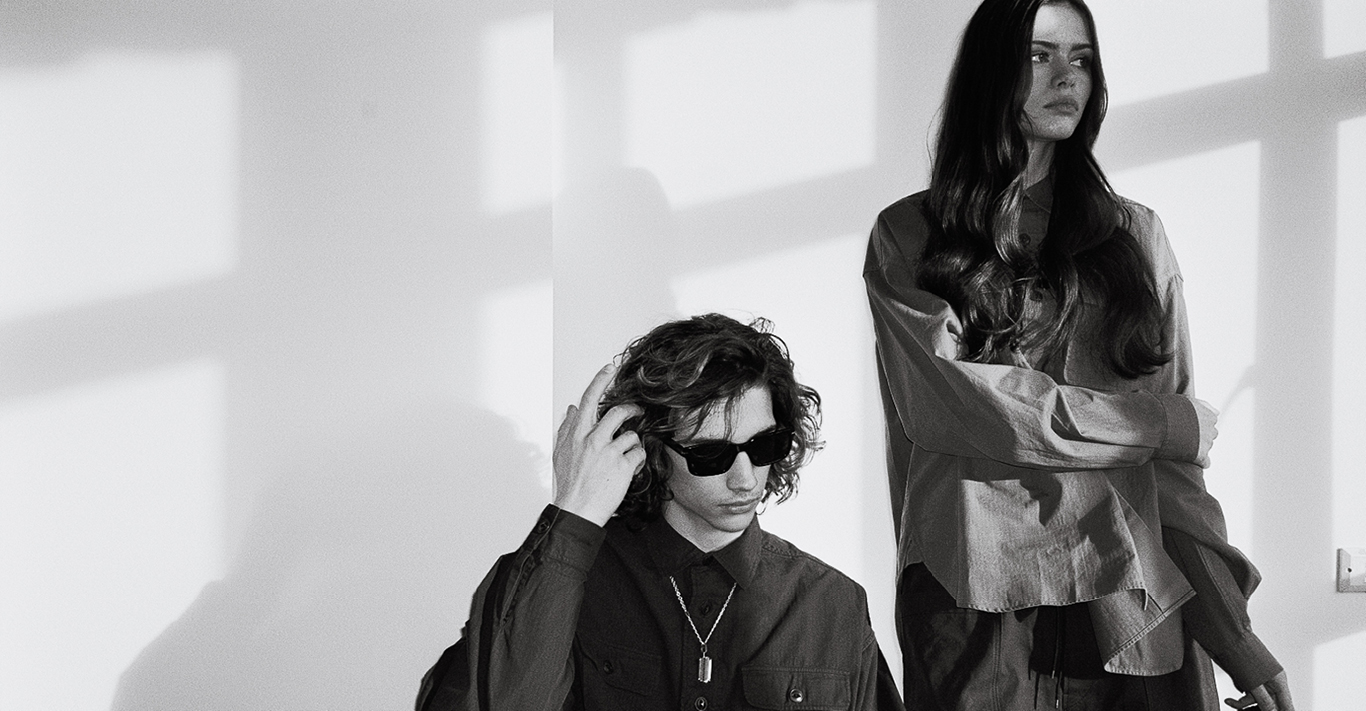Helen Arvanitakis is the director of the new Design District on Greenwich Peninsula, London’s first purpose-built work space for creatives, set to open later this year beside North Greenwich Tube station and the O2. Archilovers has called the project, which is made up of 16 purpose-built buildings designed by eight different architects, “an uplifting vision of post-Covid London.” Helen Arvanitakas talks to Brummell about why she believes this is true and how they have tried to build a development that will truly support London’s creative industries.
The Design District is being developed as part of Greenwich Peninsula by property developer Knight Dragon. I worked with Knight Dragon on a number of Greenwich Peninsula projects when I worked at Tom Dixon for 10 years and I always respected what they were doing and had an affinity with the team so stayed in touch. A few years later the opportunity came up to work on the Design District.
Technically my job title at the Design District is director, but I think I’m probably a jack-of-all-trades. The role is interesting because it’s quite a complex project and my job is about coming up with a cohesive or coherent vision for the district and then delivering on that vision.
I think the development of the Design District is important because London doesn’t have a creative centre built for it yet. What the city actually has is clusters of creatives in random, repurposed, often very shoddily built buildings. Personally, I think the creative industries suffer as a result – why should they suffer in spaces that aren’t appropriate for them? I am totally and utterly dedicated to the creative industries – I think they are probably the best secret weapon this island has – and I think they are undervalued.
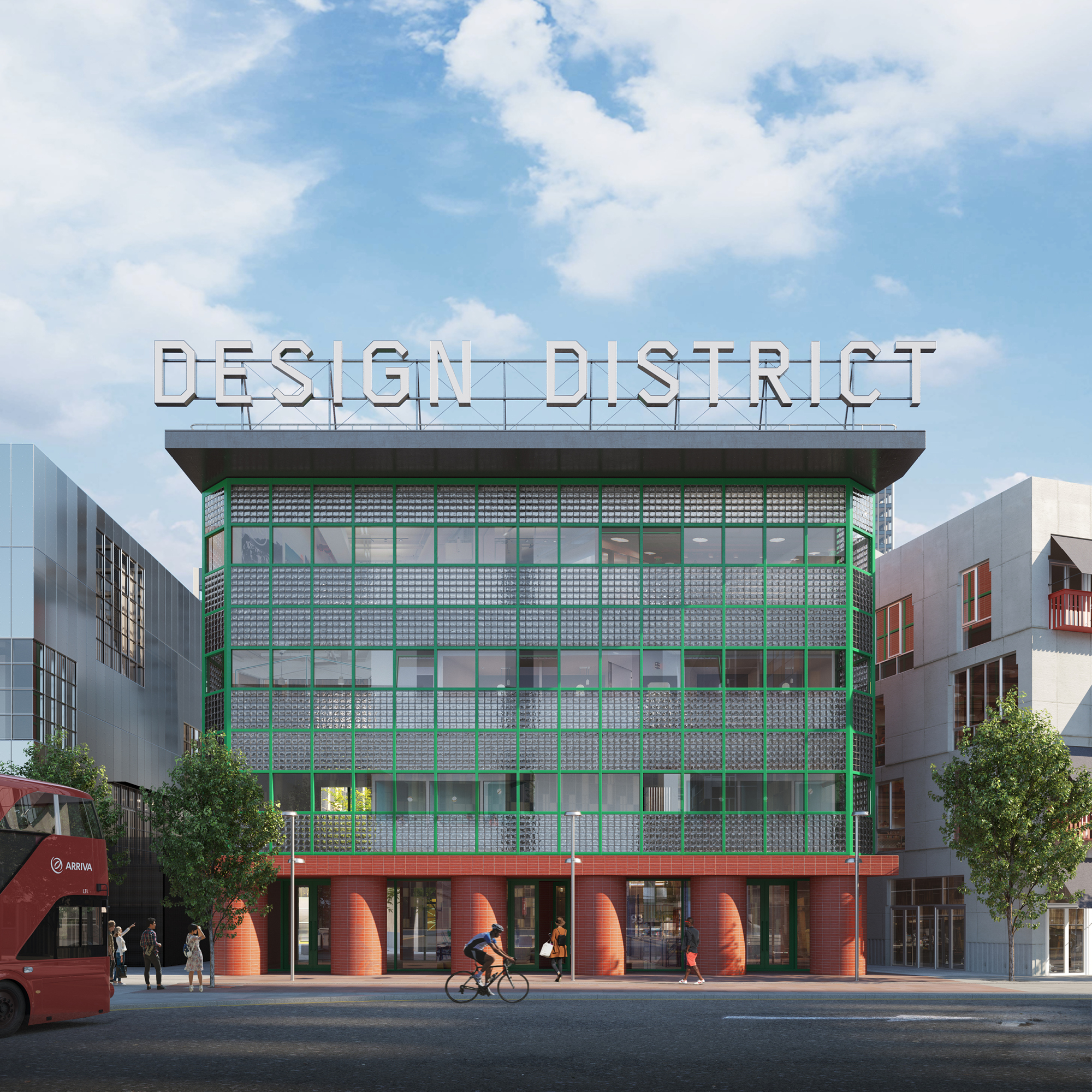
The Design District is made up of 16 buildings designed by eight architects who are all leaders in their own right and notable in a particular way. The architects include HNNA, 6A Architects, Adam Khan Architects, Architecture 00, Barozzi Veiga, David Kohn Architects, Mole Architects, and SelgasCano. The landscape tying these eclectic buildings together is designed by Schulze+Grassov. The list of architects we wanted to work with came together through recommendations and our own feeling about what firms we thought had recently done fantastic and interesting projects that we thought were noteworthy – both in terms of aesthetics but also in approaching work in new and innovative ways.
HNNA created the master plan for the Design District and put together what is called a sugar cube brief, splitting the site into little chunks and giving two chunks to each architecture practice to fulfil and design in isolation – they weren’t allowed to share ideas or swap notes or anything like that. The practices then went off and came up with the concept design for their buildings and then the ideas were put together without any real tweaking. It was fascinating to see how the practices had all approached the brief differently, and I think some of the architects were shocked that we took it on and built the scheme. That was always the idea. The way that Greenwich Peninsula is being developed is completely new and fresh. It’s like the traditional development rulebook has been thrown out – not from a standards or safety point of view, of course – but in the way that Knight Dragon has gone out of its way to try and encourage thinking and approaches that aren’t often used in property development.
The master plan HNNA has put together is really wonderful and prioritises the community of creatives that will be at the heart of it, which is a really refreshing way to work. And what we’re layering on top of that is the desire to try and get in as many of the different camps that sit inside the creative industries as possible. We won’t shoehorn in everybody, we recognise that the district can’t be everything to everyone, but we will try and find a place for as many as we can. And we’re looking closely at how we can operate the space to try and encourage all of these different tribes to bump into each other and rub along and as a result have new ideas and collaborations and new possibilities available for them.
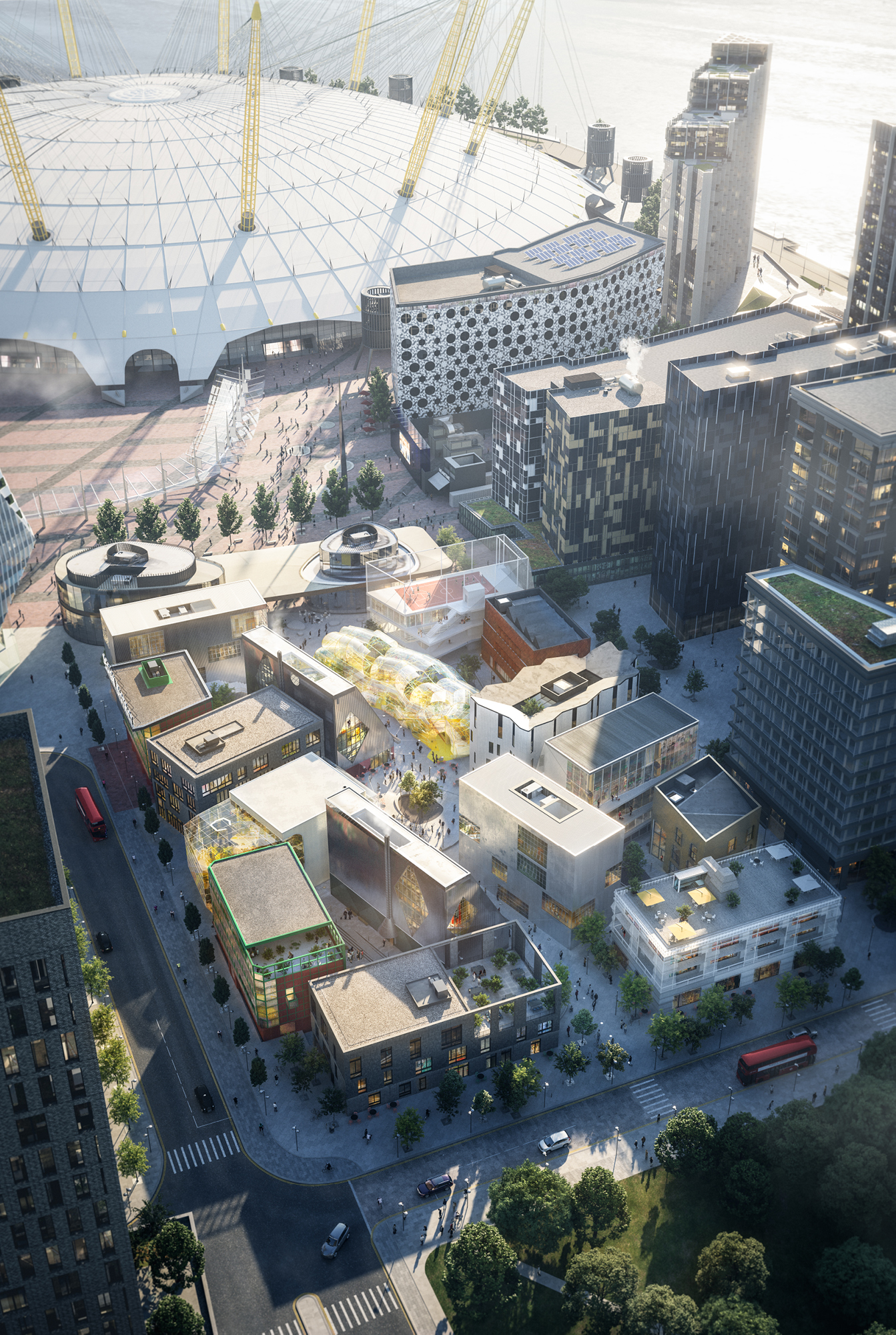
For most of the buildings there are a number of design approaches adopted by the architects to make the spaces ideal to work in, especially for creatives. Most of the buildings have big windows on the north side to bring the most amount of indirect daylight possible, which is good for the eyes and makes for a much nicer environment than being lit by synthetic lights all day long. On top of that, most of the buildings have a shallow floorplate so people will never be that far away from a window – something that studies have shown makes people more productive. All but three of the buildings will be naturally ventilated, which we found out people prefer, even if it means being a bit hotter in summer and colder in winter. The buildings are designed so that people move well around the buildings, having nice wide staircases and really good circulation on the floor spaces themselves. The buildings are arranged in clusters of four, and in the heart of each is a working courtyard where tenants can take out their projects, or use it to paint or sand: whatever is needed for their creative process. At the heart of the Design District is a bigger square where we’re hoping people will congregate on sunny Friday evenings. The Design District will also have a members’ club with co-working space, which is a way of bringing in more people than are based in the District itself, perfect for freelancers, people from other countries or who have a head office in a different part of town.
We’ve let some of the space already – one whole building will be taken over by a university who will be using it to run a post-graduate programme on where craft meets technology. We will also have a great food hall, because everyone needs to eat! And we will springboard off that to use another building to be dedicated to food businesses that will have access to the prep kitchen. We’re also talking to a marketing agency and a heap of other small creative businesses – everything from architects to graphic design agencies, visual effects, fashion and gaming – the list is huge. We think it’s helpful for us to try to be reasonably broad in our interpretation of creative industries as when we spoke to a number of people who work in fashion, for example, we realised how linked they are to the world of beauty and wellness, and that there is a whole ecosystem around them. If you have all of those things in one place, who knows what new ideas and possibilities they will come up with?
The Design District is going to be a place for collaboration and that comes not only in the way the spaces are designed but also in the way it will be operated. There will be a carefully planned events programme that will try to hit on the topics that are relevant to the tenants at that particular moment. That could literally be from how to complete a tax return to a new technology or software – whatever is relevant.
Greenwich Peninsula is a location that London is just beginning to become familiar with, as it’s an alternative to the traditional centres of the creative industries in Soho and Shoreditch. North Greenwich is only one stop along from Canary Wharf and the Jubilee line is the fastest Tube line in London so, in terms of minutes, it’s actually a short journey to get to central London and the other creative areas of the city. There are also a lot of other interesting developments really close by – the new V&A, Sadler’s Wells and UAL’s London College of Fashion in Stratford, for example. On Greenwich Peninsula, too, there are lots of interesting developments such as The Tide – an elevated riverside park next to the river and a giant state-of-the-art venue, Magazine London.
I agree 100 per cent with Archilovers saying that the Design District is “an uplifting vision of post-Covid London”. I am delighted to be involved in a project where we’re in touching distance of the finish line to know that the project will be completed. The Design District is a permanent development, which makes a big difference for the creative industries that have been badly hit by Covid-19 and many of whom are in spaces that are going to be turned into high-end residential or the rent will come up for significant review in two to three years’ time. None of those things are going to happen to the Design District – it has been built and modelled financially to take all of that guesswork away from the tenants’. And, like I said before, it’s the first time that something has been built for these people that isn’t an academic institution; it’s specifically designed for the creative industries, it’s nurturing, it’s healthy, it’s the future.
designdistrict.co.uk

